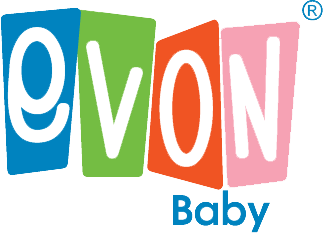What to do when your baby is refusing a bottle

What to do when your baby is refusing a bottle
7min. read
In an ideal world your little one’s switch from breast to bottle feeding would be as smooth as a baby’s bottom. If that’s not the case and your breastfed baby is refusing a bottle, don’t worry. This isn’t uncommon for babies who are used to breastfeeding, but it can understandably lead to a bit of frustration for moms – especially when a return-to-work date is just on the horizon.
So what happens if your baby refuses the bottle and cries? There are many ways you can introduce a bottle to your baby to help ease the transition from breast to bottle. Here’s the essential information on what to do when your baby isn’t taking the bottle.
Your Baby is refusing a bottle? Take a step back
If your baby is crying when feeding from a bottle, the first thing to do is start over and check your approach. Try the following steps when bottle feeding your baby:
- Tilt your baby’s head. Just before you introduce the bottle, make sure that your baby’s head is tilted above his or her body to help avoid any choking, spitting up, or overfeeding.
- Introduce the bottle nipple. Bring the nipple to your baby’s lips and, rather than pushing it into his or her mouth, gently slide it in.
- Keep the bottle at an angle. Tilt the bottle at an angle that fills the nipple only halfway. This will allow your baby to drink at his or her own pace.
- Burp your baby during and after feedings. In addition to burping after feedings, it may be helpful to burp your newborn about halfway through feedings. This could help relieve any gassiness or belly discomfort that your baby may be feeling from swallowing too much air.
- Throw it away. When your baby starts turning his or her head away from the bottle, it means that he or she is full and the feeding session is over.
Other ideas if your baby isn’t taking the bottle
If you’re following the above steps and your little one still refuses a bottle, try to avoid becoming frustrated. There are many other ways to help if your breastfed baby is refusing a bottle. Here are a few tips that you can try adding to your bottle-feeding routine.
- Remind your baby of mommy
There will be times when someone else is feeding your baby, whether it be your partner or your child’s caretaker. If your baby is fussy during bottle feeding, it may help to wrap the bottle in something that smells like you, such as a piece of clothing or cloth. This could make it easier for your baby to feed during those times when he or she is away from mommy.
- Enjoy more skin-to-skin contact
Some breastfed babies prefer more skin-to-skin contact. Try letting your baby feed in just a diaper and in his or her favorite breastfeeding position during bottle feeding. On the other hand, some babies respond better to bottle feeding in a completely opposite position to when they are breastfeeding. If your baby is refusing a bottle, experiment with both approaches to see if one helps more than the other.
- Move around during feedings
Sometimes, all that’s needed to get your baby to take a bottle is a little gentle swaying, rocking or walking. The next time your baby cries during bottle feeding, try moving rhythmically to help calm him or her.
- Try different nipple and milk temperatures
Experiment with different nipple and milk temperatures if your baby won’t take a bottle. Try putting the nipple in the refrigerator to cool it down or run warm water over it. As your breast milk is lukewarm, the same bottle temperature is ideal for some babies. Others may prefer it room temperature or colder. Every baby is different and it may take a few tries to discover what your little one prefers.
Choosing the right bottle for your baby
If your baby cries during bottle feeding, choosing the right bottle can make switching from breast to bottle feeding much smoother. Below are our must-haves when it comes to baby bottles:
- Anti-colic system proven to reduce colic
- Easy to hold
- BPA free
If your breastfed baby won’t take a bottle, it could be that you haven’t found the right bottle or nipple. You could consider this glass baby bottle – its ultra-soft nipples to help make bottle feeding a more natural experience for you and your baby. The proper nipple follow also helps your baby achieve a natural latch, making it easy to combine breast and bottle feeding.
If your baby is fussy during bottle feedings, it may be helpful to try to relieve any gassiness or reflux that he or she may be experiencing. One option is this anti-colic bottle that has a unique anti- colic system to help reduce colic, gas and reflux. By keeping the nipple full of milk, rather than air, this bottle is designed to help your baby swallow less air as they feed.
Both bottles are great options for when you want to combine or transition from breast to bottle feeding.



